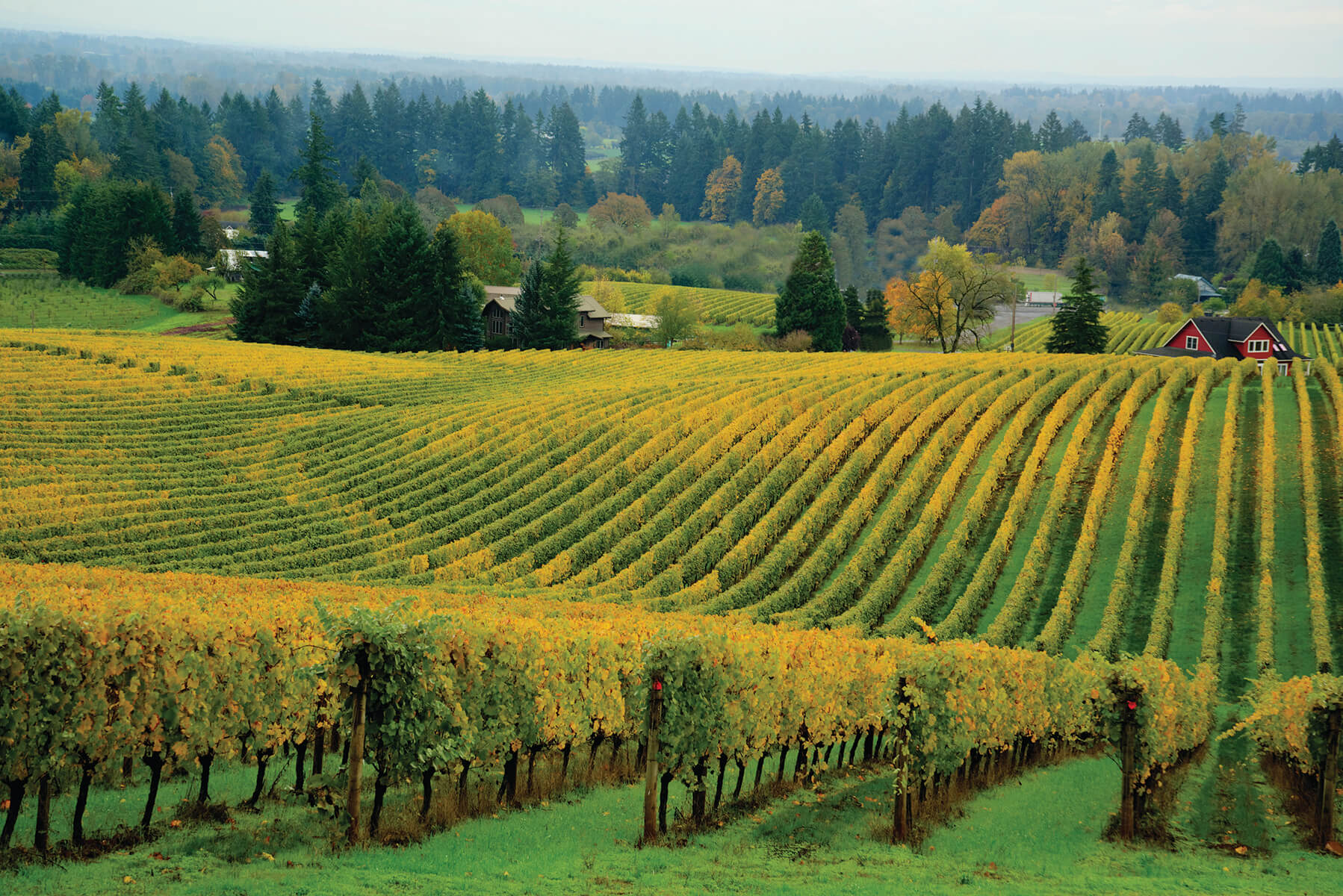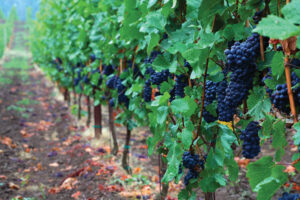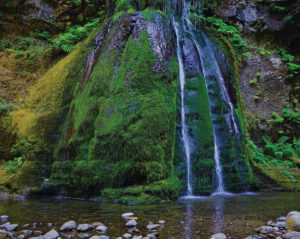
11 Fabulous Facts about the Beautiful Willamette Valley
Go Next Guests recently returned from our Wines of the Pacific Northwest Program. This scenic 7-night voyage sailed along the Columbia and Snake Rivers between Clarkston and Vancouver aboard the American Empress, the largest and most elegant riverboat west of the Mississippi. Go Next is now booking 2019 trips traveling to the Pacific Northwest, a region renowned for its spectacular scenery, and home to the Willamette Valley. Here are eleven fun facts to nurture your intrigue about this unique region.
- The Willamette Valley is the heart of Oregon with approximately three-quarters of all the Oregonian population. It’s surprising to discover that the Willamette Valley is home to the six largest cities in the state of Oregon: Portland, Eugene, Salem (the capital), Gresham, Hillsboro, and Beaverton. Out of 4 million people in the entire state of Oregon, a whopping 3 million live in the Willamette Valley, snugly framed by the Cascade Range, Oregon Coast Range, and Calapooya Mountains.
- The Willamette Valley’s robust fertility is the product of multiple ice-age floods. This alluvial plain is rich with volcanic and glacial soil produced from ice floes out of Montana’s Lake Missoula, swept toward the Columbia River Gorge. At times the valley was covered under as much as 400 feet of water—almost half as high as the Empire State Building.
- Even the New York Times agrees that Willamette Valley is home to “the country’s most exciting wine area.” There’s more than just a bit of a rebel spirit here. Willamette Valley is clearly getting called out for its “wine counterculture,” as worded by Eric Asimov in his article “The Oregon Trail.” The Willamette Valley has over 500 wineries within 150 miles. Most of the wineries are family affairs and run with a sense of personalized curation. This region is winning world-class honors for its artful production of Pinot Noir. Don’t miss an opportunity to visit one of the boutique wineries in this band of viticultural innovation.

Pinot Noir grapes, Willamette Valley
- If you are a foodie, you can’t miss an opportunity to visit Willamette Valley. With so much going on in the Willamette Valley, it’s no surprise that adventurous and astute chefs are filing into this idyllic setting to serve some of the finest farm-to-table gustatory delights. You can taste haute cuisine framed by the breathtaking vistas of the Cascade Range, Oregon Coast Range, or the Calapooya Mountains. Of course, we can’t overlook the inspiring beauty of the undulating valley and oak savanna landscape threaded by creek beds and rivers.
- The Willamette Valley is a favored destination for whitewater rafting. If you are a beginner rafter you might want to take a lounge-like trip along the eastern side of the valley to North Santiam River which offers plenty of luscious scenery, crystal clear waters, and moderate whitewater action. If you are the more aggressively adventurous type, jump into a raft on the chilly and rapid waters of the McKenzie River splitting through the Willamette National Forest.
- The largest meteorite found in North America comes from the Willamette Valley. The meteorite’s official name is the Willamette. This 32,000-pound iron-nickel surprise from the sky is on show for the public at the American Museum of Natural History in New York, New York of all places. It was sacred to the indigenous people of the area before a settler named Ellis Hughes secretly moved it in 1902. Hard to believe it was such a secret since it took 90 days and what is certain to have been a whole lot of man power.
- The first people to manage the Willamette Valley landscape were the Kalapuya People, at the time the largest western indigenous population. These innovators were the first to burn the prairie landscape of Willamette Valley as a strategy for managing the growth of vegetation. In other words, they were the first people to cultivate the land of the Willamette Valley for the purpose of food production. It is believed that the population of the Kalapuya numbered in the 15,000s and was divided among 13 tribes with 13 distinct languages.
- The iconic symbol of the Willamette Valley is the Oregon white oak tree. The burning of the prairie by the Kalapuya created large expanses of savanna that made it possible for the growth of oak trees. Valued both ecologically and culturally, these brawny trees—that live as long as 500 years—provide shelter to a diverse number of unique birds and wildlife. In fact, 93 species are known to make use of the tree’s canopy for shelter and acorns for food.
- The grass is always greener in Willamette Valley. That’s because it grows more turf and forage grass than anywhere else in the world. The leading agricultural crop of Oregon and Willamette Valley is grass seed. If you’ve recently sprinkled your lawn with grass seed, the likelihood that it came from the Willamette Valley is pretty high considering it is the “grass seed capital of the world,” and it brings in more than one billion dollars in annual economic activity. Next time you are investigating the differences among ryegrass, orchardgrass, Kentucky bluegrass, bentgrass, and fescue, you are looking at the principle varieties of grass seed produced in this bountiful valley. Roughly 400,000 acres of grass seed were produced in Oregon in 2017, and 360,000 acres of the total came from the Willamette Valley. This growth level is expected to hold about the same numbers for 2018. You don’t need to get green with envy; thanks to the roughly 1,300 grass seed farmers of this surprising valley, your lawn can look as pretty as the Emerald City.
- You don’t have to fly to Germany for Oktoberfest. Just take a trip to the charming town of Mount Angel, just 18 miles northeast of Salem. This town was originally settled in the 1880s by Swiss Benedictine monks. Soon after, large numbers of Bavarian immigrants began settling in the area. In the springtime this little Willamette haven is known for its flower and garden events including a flurry of tulips and wooden shoes. In late September, the fall harvest brings out hopped beers, accordions, and lederhosen.
- Did I mention the waterfalls? Because Willamette Valley is rife with them. If the rushing sound of water soothes your soul, there are several—at least ten—soulful spots to alleviate tensions accrued from the daily grind. Try Silver Falls State Park, McDowell Creek Falls, Munson Creek Falls, Butte Creek Falls, Spirit Falls, Wildwood Falls, Siuslaw Falls, and of course the largest waterfall in the entire Pacific Northwest—and the widest too—Willamette Falls.

Spirit Falls
If you like rolling hills, prairies blooming with wildflowers, oak savannas, majestic mountain ranges, rivers, creek beds, and waterfalls—with ample opportunity for a wide variety of activities—check out our upcoming Pacific Northwest cruises, with an exclusive Pre-Cruise Programs to the Willamette Valley.